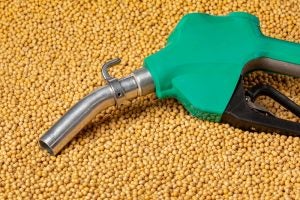Food insecurity continues to be a problem for the world — and it’s a problem that’s getting worse. According to the World Bank , the number of people facing moderate to severe food insecurity topped 2 billion in 2022. Logic tells us that we need to grow as much food as possible — but a good deal of arable land is used to grow crops that end up not as food, but as feedstock for biofuel production.
Globally, at least 8 percent of agricultural land is used to grow biofuel feedstock, mainly for biodiesel and ethanol; in the U.S., nearly half of corn production is used in ethanol production. On the other hand, biofuels help reduce greenhouse gas emissions — in some cases by over 80 percent, depending on the feedstock used. And according to studies, biofuel based gas and diesel could replace as much as half the amount of petroleum-based fuels now in use — a prospect that should be taken seriously as a path to reducing carbon dioxide and greenhouse gas emissions.
The world definitely needs more food — yet we can’t afford to increase pollution in order to produce it. Biofuel technology is a proven and effective way of doing that. But we don’t have to make a choice here; instead of using prime agricultural land, biofuel feedstock can be grown in vast swathes of “marginal” agricultural land that is currently used for food production.
If those lands aren’t fit for food crops, they may be fit for biofuel crops. Feedstock produced on marginal lands could be especially useful for biodiesel, mostly used for trucks, ships, and planes, all of which cause high levels of pollution, and for which no practical alternative cleaner fuels yet exist — and for which alternative solutions, like electric, are unlikely to be developed in the near future. Utilizing formerly unusable land to produce crops for biofuels doesn’t “steal” food from the hungry; it utilizes resources that would otherwise have gone to waste, making the world a healthier place for everybody.

According to experts, about a fifth of the world’s land is “marginal,” with nitrogen-deficient soil that does not contain the resources to grow crops that could sustain human beings. Many of these lands are located in the developing world, where residents attempt to eke out a living from plots that barely produce food they can eat. In the developed world, meanwhile, many of these lands have been abandoned because of the major investment in fertilizers that would be needed in order to grow food.
It’s true that marginal lands will, at best, produce marginal crops that won’t be able to sustain farmers — but biofuel feedstock doesn’t need to have nutrients required for human consumption. In fact, research shows that marginal lands — lands with low nitrogen levels — are very well suited for biofuel feedstock production, with yields of specific crops grown for feedstock higher on marginal lands than if they were planted on agriculturally rich land. This is especially true for castor.
Utilizing marginal lands for biofuel feedstock could also help poor farmers, especially in the developing world. Instead of utilizing their land to produce food that can barely feed them — and can only be sold for a pittance — farmers could grow biofuel feedstock crops that would be in demand by fuel producers around the world. And the largest swathes of marginal lands, according to researchers, are in precisely the areas of the world where poverty levels are highest — southern Africa, Southeast Asia, the American South, and others.

According to the World Bank, biofuels will not only provide opportunities for farmers in these regions “to grow new cash crops but will also cause the relative prices of all agricultural commodities to rise because of the increased competition for resources — breaking the decades-long trend of declining real prices for agricultural commodities.” Currently, corn dominates as the preferred crop for biofuel production, but there is increasing sentiment against that; besides the fact that corn could actually be used to feed people, researchers have determined that corn-based ethanol production “is likely a much bigger contributor to global warming than straight gasoline.” Instead of the prime agricultural land used to produce corn for ethanol, marginal lands could be used to produce feedstock from crops not usually used for food — such as switchgrass, hemp, carrizo cane, and castor.
The “food vs. fuel” debate has raged for years — with biofuels blamed for everything from higher food prices to higher levels of world hunger. But a shift to a mass growing of biofuel feedstock on marginal lands, and a shift from corn to other crops that grow well in these conditions — could make that debate moot — and at the same time, improve the environment lives of millions. Far from “stealing” food from poor farmers, biofuel crop production, when done right, could help them make more money — so they will be able to feed themselves.
This op-ed was written by Eyal Ronen, chief executive officer of Casterra, an Israeli company that uses advanced technologies to breed stable castor varieties that can be cultivated using mechanized agro-technical practices.


